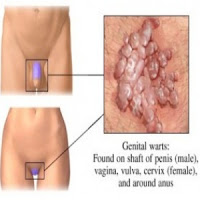Signs and symptoms of STDs - Lovemaking Transmitted Diseases Quick Data
Sexually
transmitted diseases, or even STDs, are passed in one person to another via
sexual acts for example oral sex, anal intercourse, and penetrative sexual
intercourse. There are currently 25 STDs recognized to the medical community
most abundant in common being syphilis, hepatitis The and B, gonorrhea,
Chlamydia, as well as AIDS. These sexually sent diseases stem from germs,
viruses, and fungi that live and multiply in a variety of bodily fluids. The
risk of being suffering from STDs can be increased by having several sexual
partners as well as participating in sexual acts with somebody who has more
than one companion. However, using a condom can greatly lower the danger of
contracting all STDs.
Because
there is a multitude of sexually transmitted diseases, there are lots of
symptoms associated with these kinds of diseases. For example, syphilis is
usually realized when small vaginal warts, clinically called chancres, can be
found. The chancres, which are similar in dimensions to buttons, may also be observed
on the anus and within the throat region.
Gonorrhea,
also called "the drip disease" or even "the clap,” creates a
discharge that originates from the penis or vulva and it is similar in
consistency in order to mucus. Those who contract vaginal herpes will notice
blister-like ulcers appearing round the genitalia area. In numerous cases,
those with an STD will even suffer from urinary problems.
Although
there are vaccines with regard to hepatitis A and W, the only way to become
completely protected from any kind of STD is by training abstinence. This is
why it is suggested to restrict the quantity of sexual partners you need to
people with clean lovemaking health histories; this is the best way of reducing
the danger of STDs. Condoms will also be highly effective in stopping sexually
transmitted diseases but only if the condom is utilized properly; otherwise,
there is really a greater chance of getting infected. It is important to
consider that condoms are not 100% foolproof and therefore are only able to
avoid the male penis from holding the female skin. The genitalia area continues
to be susceptible to STDs for example syphilis even if a condom can be used per
manufacturer and healthcare instructions.
If
anyone has tested positive for any kind of STD, it is imperative to prevent all
sexual acts till they receive appropriate treatment. Except for AIDS, you will
find treatments for all other STDs and also the earlier treatment is obtained,
the better the outcome for that patient. While there are complete cures for a
number of these diseases, some may only be managed via treatment.
The
biggest concern doctors have regarding STDs may be the various complications
that may arise. Sometimes infected men can become impotent or experience
erection dysfunction and women can are afflicted by infertility. Both genders
may feel pain along with other abnormal sensations while urinating. Other STD
symptoms can sometimes include blisters, itching, tenderness, and severe pain
around affected body parts.
It is
possible to manage the spread of STDs via proper, accurate education.
Nevertheless, since many sexual sent diseases stay dormant with regard to
months to years in the time of infection, when the visual signs are apparent,
the disease may have spread to a large number of other people so those people
who are sexually active should usually get tested for STDs.









